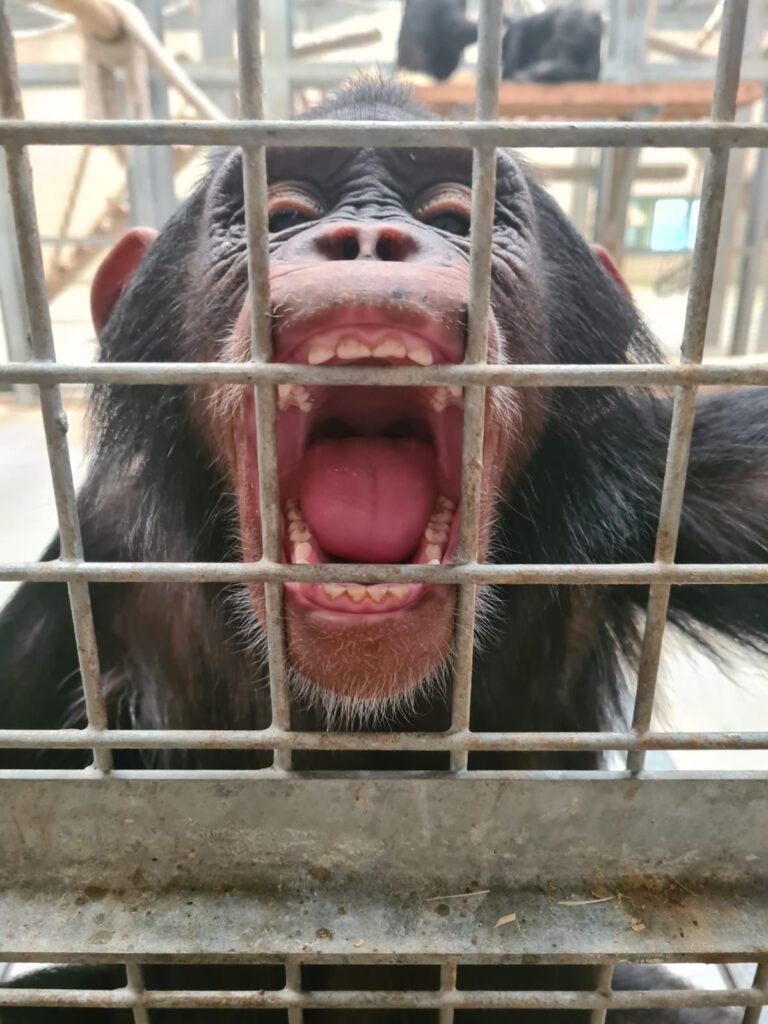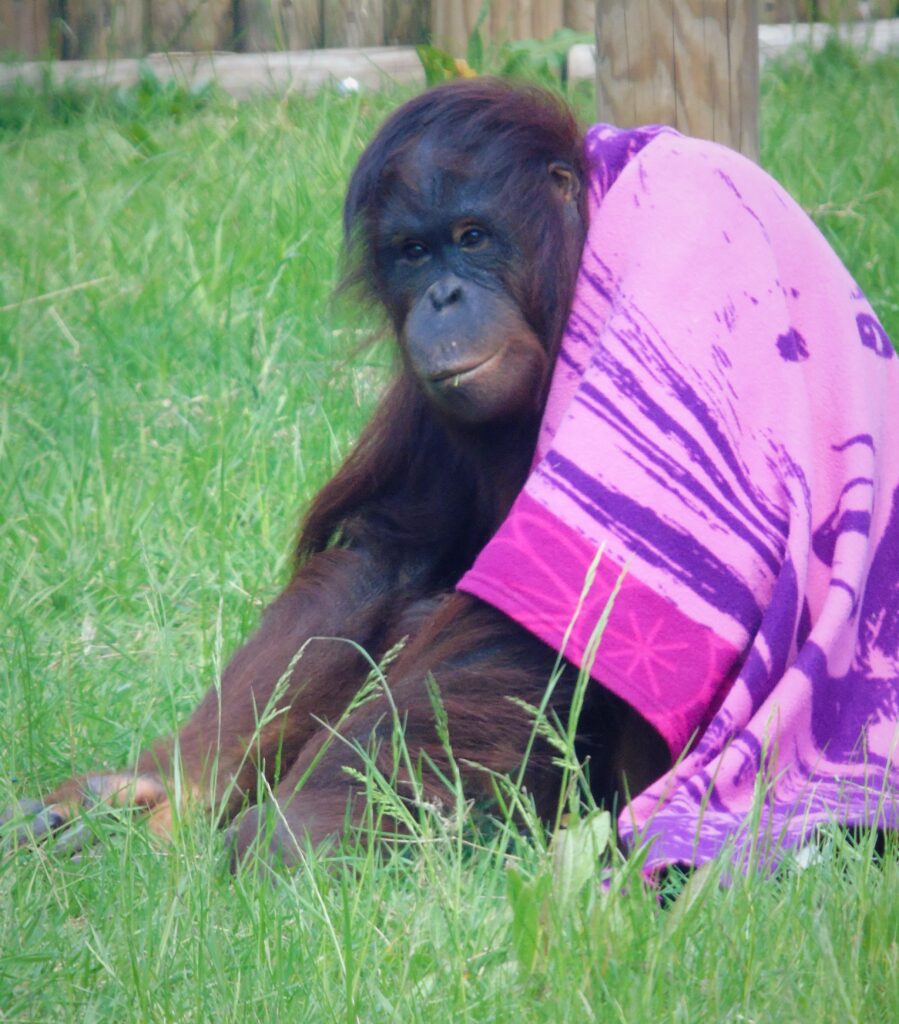Hi everyone, my name is Georgia, I am the vet for Wingham Wildlife Park. As it is World Veterinary Day on Saturday 27th April, we thought you might like an insight into what I get up to as the onsite vet for the collection!
My role as a vet in a zoological collection varies hugely from day to day. From caring for our animals when they become unwell, to maintaining preventative healthcare programmes, reviewing animals’ diets and contributing to research and conservation projects.
Clinical Exams
Our Head of Training and keepers work hard with our animals to encourage behaviours that allow us to examine them safely. This is particularly important for our more dangerous animals who require protected contact protocols. This means we only work closely with this species when there is a physical barrier in place between the animal and our keepers in order to keep everyone safe.
One example of this is our chimpanzee troop. They have training sessions built into their daily routines which forms part of their enrichment. Trained behaviours include holding up limbs for assessment and injections, presenting their chest so we can listen to their hearts and even opening their mouths to allow us to check their teeth.

This works as a great way for these animals to provide me with lots of information about their health whilst they remain relaxed and comfortable in their enclosure.
Anaesthetics
One of the more exciting (yet nerve wracking) parts of my job is when we anaesthetise our animals. This is done for a variety of reasons including investigating illness, preventative healthcare and as needed for moving them.
Unlike our domestic cats and dogs many of our animals are not safe to manually hold for anaesthetic injections. This means that we have to use training programmes to safely sedate an animal when medically necessary. A number of our animals have also been trained by our Head of Training to accept injections delivered by hand (e.g. large cats, primates and great apes). This method is significantly less stressful for our animals, making for an all round safer anaesthetic.
Once they are fully asleep we can safely carry out a full clinical examination. To date, my most interesting anaesthetics have included anaesthetising our clouded leopards for their move to the nocturnal house, Ted the tortoise to investigate his upset stomach and Molly the orangutan for her routine health check.


Similar to domestic animals, the animals in our collection are able to become affected by parasites. As part of our preventative health plan we carry out regular faecal testing on all of our residents. That being said, testing the poo of every animal in the park makes for a rather smelly job… Big cats and fish eating birds are currently tied for being the worst!
Whilst every day in this job has something exciting to offer, here’s two highlights from the year.
Moving our Clouded Leopards
Clouded leopards are a species who are known to be more active at night. They have excellent eyesight which allows them to locate their prey even in the dark forest at night. Wingham is home to a gorgeous pair of clouded leopards, Hari and China. Prior to their move, they lived at the top end of our park opposite our bears.
Once their new enclosure in our Nocturnal House was complete it was time to move them in. Moving a leopard from A to B is rarely as simple as popping them in a cat carrier. Many cat owners will understand is no easy feat even with a domestic cat!
We opted to sedate them for their move as it would make the process less stressful for our cats. It would also provide the opportunity to give them a health check before we moved them down. One at a time we sedated each leopard; once they were asleep we were able to complete full clinical assessments.
Once we were happy that they were in good shape we popped them in a crate for movement across the park. Both cats slept peacefully through their journey down to the Nocturnal House and woke up nicely once they were in the safe confines of their new home. It is fantastic to see them in their new enclosure where they can be seen exploring throughout the day.

Nando the Tapir
This year the 27th April is not only World Veterinary Day but also World Tapir Day! Not long after I joined the collection, I was called to examine our male tapir Nando. The keepers had noticed that he seemed to be weeping from one of his eyes. We quickly discovered that he had a small ulcer on the surface of this eye.
Treatment of ulcers requires the regular application of eye drops. Being a full sized male tapir, if Nando doesn’t want to do something then there isn’t much that you can do about it. However, anyone who knows Nando will tell you that the way to this tapir’s heart is through his stomach! With a combination of lots of vegetables and the occasional chin scratching session we were able to convince him that his treatment plan really wasn’t so terrible! In time, his eye healed and he is now happily back to causing mischief on the lake with his girlfriend Kathleen.

As you can see it has been a very exciting first year for me here at Wingham Wildlife Park. It has been fantastic getting to know the animals and working alongside our keepers. I feel exceptionally lucky to be involved in the care of the incredible individuals who live here and look forward to continuing to develop our growing practice over the years to come!



No Comments
Be the first to start a conversation